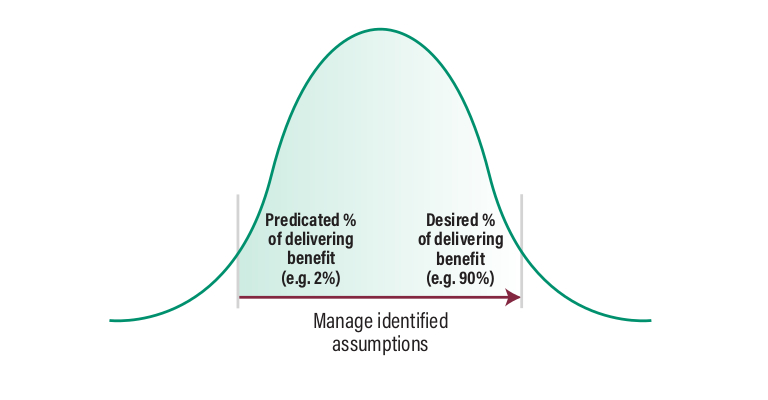How can we avoid the risk that programme benefits will not be realised?
Strategic Benefit Analysis (SBA) can be used to assess the probability of realising benefits and also showing the assumptions that need to be managed in order to recover the situation. SBA can be used at any time but it is normal to apply it in the latter stages of the programme.
It works by adding a quality/confidence dimension to the estimating process so that high quality estimates, based on relevant experience, are treated differently from low quality estimates which are little more than guesses.

The output takes the form of a probability distribution diagram and a “roadmap” of risky assumptions (and opportunities) that need to be managed in order to move the curve to the left and squeeze it (i.e. increase the chances of realising potential benefits and reduce the uncertainty). The assumptions are rigorously linked to the estimates that have been made so that the effects of managing a given risky assumption, or realising an opportunity, remain explicit throughout the process.
SBA can also be applied in sales organisations to predict the likelihood of achieving sales targets and explicitly showing the assumptions that need to be managed in order increase the confidence of meeting the targets.
The basic methodology of SBA can also be applied to timescale uncertainties (ie using STA) and cost uncertainties (ie using SCA). The good news is that, with all of these techniques, the analysis process is very fast ie days rather than weeks, even for mega-programmes.
